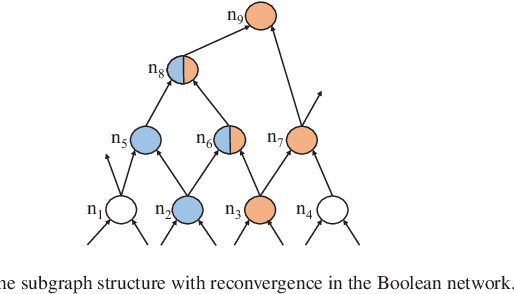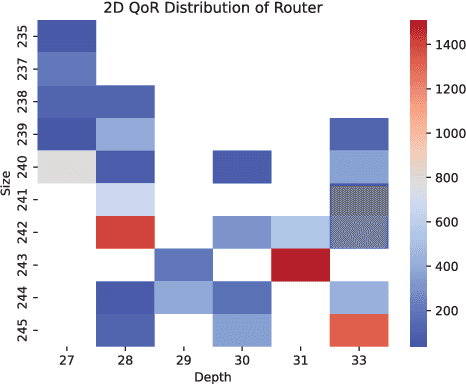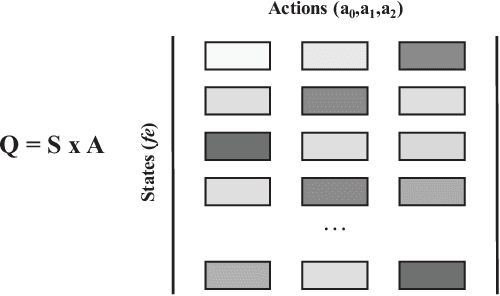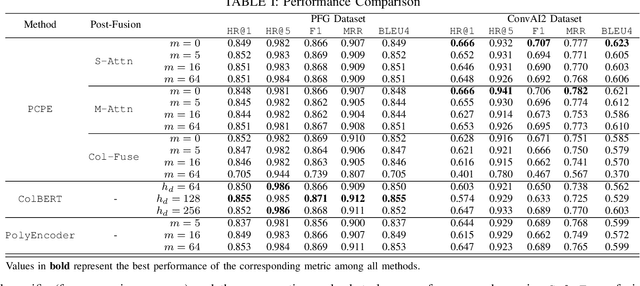Junfeng Liu
HauntAttack: When Attack Follows Reasoning as a Shadow
Jun 08, 2025Abstract:Emerging Large Reasoning Models (LRMs) consistently excel in mathematical and reasoning tasks, showcasing exceptional capabilities. However, the enhancement of reasoning abilities and the exposure of their internal reasoning processes introduce new safety vulnerabilities. One intriguing concern is: when reasoning is strongly entangled with harmfulness, what safety-reasoning trade-off do LRMs exhibit? To address this issue, we introduce HauntAttack, a novel and general-purpose black-box attack framework that systematically embeds harmful instructions into reasoning questions. Specifically, we treat reasoning questions as carriers and substitute one of their original conditions with a harmful instruction. This process creates a reasoning pathway in which the model is guided step by step toward generating unsafe outputs. Based on HauntAttack, we conduct comprehensive experiments on multiple LRMs. Our results reveal that even the most advanced LRMs exhibit significant safety vulnerabilities. Additionally, we perform a detailed analysis of different models, various types of harmful instructions, and model output patterns, providing valuable insights into the security of LRMs.
CoMAC: Conversational Agent for Multi-Source Auxiliary Context with Sparse and Symmetric Latent Interactions
Mar 25, 2025Abstract:Recent advancements in AI-driven conversational agents have exhibited immense potential of AI applications. Effective response generation is crucial to the success of these agents. While extensive research has focused on leveraging multiple auxiliary data sources (e.g., knowledge bases and personas) to enhance response generation, existing methods often struggle to efficiently extract relevant information from these sources. There are still clear limitations in the ability to combine versatile conversational capabilities with adherence to known facts and adaptation to large variations in user preferences and belief systems, which continues to hinder the wide adoption of conversational AI tools. This paper introduces a novel method, Conversational Agent for Multi-Source Auxiliary Context with Sparse and Symmetric Latent Interactions (CoMAC), for conversation generation, which employs specialized encoding streams and post-fusion grounding networks for multiple data sources to identify relevant persona and knowledge information for the conversation. CoMAC also leverages a novel text similarity metric that allows bi-directional information sharing among multiple sources and focuses on a selective subset of meaningful words. Our experiments show that CoMAC improves the relevant persona and knowledge prediction accuracies and response generation quality significantly over two state-of-the-art methods.
OpenLS-DGF: An Adaptive Open-Source Dataset Generation Framework for Machine Learning Tasks in Logic Synthesis
Nov 16, 2024



Abstract:This paper introduces OpenLS-DGF, an adaptive logic synthesis dataset generation framework, to enhance machine learning~(ML) applications within the logic synthesis process. Previous dataset generation flows were tailored for specific tasks or lacked integrated machine learning capabilities. While OpenLS-DGF supports various machine learning tasks by encapsulating the three fundamental steps of logic synthesis: Boolean representation, logic optimization, and technology mapping. It preserves the original information in both Verilog and machine-learning-friendly GraphML formats. The verilog files offer semi-customizable capabilities, enabling researchers to insert additional steps and incrementally refine the generated dataset. Furthermore, OpenLS-DGF includes an adaptive circuit engine that facilitates the final dataset management and downstream tasks. The generated OpenLS-D-v1 dataset comprises 46 combinational designs from established benchmarks, totaling over 966,000 Boolean circuits. OpenLS-D-v1 supports integrating new data features, making it more versatile for new challenges. This paper demonstrates the versatility of OpenLS-D-v1 through four distinct downstream tasks: circuit classification, circuit ranking, quality of results (QoR) prediction, and probability prediction. Each task is chosen to represent essential steps of logic synthesis, and the experimental results show the generated dataset from OpenLS-DGF achieves prominent diversity and applicability. The source code and datasets are available at https://github.com/Logic-Factory/ACE/blob/master/OpenLS-DGF/readme.md.
An Adaptive Open-Source Dataset Generation Framework for Machine Learning Tasks in Logic Synthesis
Nov 14, 2024



Abstract:This paper introduces an adaptive logic synthesis dataset generation framework designed to enhance machine learning applications within the logic synthesis process. Unlike previous dataset generation flows that were tailored for specific tasks or lacked integrated machine learning capabilities, the proposed framework supports a comprehensive range of machine learning tasks by encapsulating the three fundamental steps of logic synthesis: Boolean representation, logic optimization, and technology mapping. It preserves the original information in the intermediate files that can be stored in both Verilog and Graphmal format. Verilog files enable semi-customizability, allowing researchers to add steps and incrementally refine the generated dataset. The framework also includes an adaptive circuit engine to facilitate the loading of GraphML files for final dataset packaging and sub-dataset extraction. The generated OpenLS-D dataset comprises 46 combinational designs from established benchmarks, totaling over 966,000 Boolean circuits, with each design containing 21,000 circuits generated from 1000 synthesis recipes, including 7000 Boolean networks, 7000 ASIC netlists, and 7000 FPGA netlists. Furthermore, OpenLS-D supports integrating newly desired data features, making it more versatile for new challenges. The utility of OpenLS-D is demonstrated through four distinct downstream tasks: circuit classification, circuit ranking, quality of results (QoR) prediction, and probability prediction. Each task highlights different internal steps of logic synthesis, with the datasets extracted and relabeled from the OpenLS-D dataset using the circuit engine. The experimental results confirm the dataset's diversity and extensive applicability. The source code and datasets are available at https://github.com/Logic-Factory/ACE/blob/master/OpenLS-D/readme.md.
Generalization Gap in Data Augmentation: Insights from Illumination
Apr 11, 2024Abstract:In the field of computer vision, data augmentation is widely used to enrich the feature complexity of training datasets with deep learning techniques. However, regarding the generalization capabilities of models, the difference in artificial features generated by data augmentation and natural visual features has not been fully revealed. This study focuses on the visual representation variable 'illumination', by simulating its distribution degradation and examining how data augmentation techniques enhance model performance on a classification task. Our goal is to investigate the differences in generalization between models trained with augmented data and those trained under real-world illumination conditions. Results indicate that after undergoing various data augmentation methods, model performance has been significantly improved. Yet, a noticeable generalization gap still exists after utilizing various data augmentation methods, emphasizing the critical role of feature diversity in the training set for enhancing model generalization.
Word Order's Impacts: Insights from Reordering and Generation Analysis
Mar 18, 2024Abstract:Existing works have studied the impacts of the order of words within natural text. They usually analyze it by destroying the original order of words to create a scrambled sequence, and then comparing the models' performance between the original and scrambled sequences. The experimental results demonstrate marginal drops. Considering this findings, different hypothesis about word order is proposed, including ``the order of words is redundant with lexical semantics'', and ``models do not rely on word order''. In this paper, we revisit the aforementioned hypotheses by adding a order reconstruction perspective, and selecting datasets of different spectrum. Specifically, we first select four different datasets, and then design order reconstruction and continuing generation tasks. Empirical findings support that ChatGPT relies on word order to infer, but cannot support or negate the redundancy relations between word order lexical semantics.
Adaptive Reconvergence-driven AIG Rewriting via Strategy Learning
Dec 22, 2023



Abstract:Rewriting is a common procedure in logic synthesis aimed at improving the performance, power, and area (PPA) of circuits. The traditional reconvergence-driven And-Inverter Graph (AIG) rewriting method focuses solely on optimizing the reconvergence cone through Boolean algebra minimization. However, there exist opportunities to incorporate other node-rewriting algorithms that are better suited for specific cones. In this paper, we propose an adaptive reconvergence-driven AIG rewriting algorithm that combines two key techniques: multi-strategy-based AIG rewriting and strategy learning-based algorithm selection. The multi-strategy-based rewriting method expands upon the traditional approach by incorporating support for multi-node-rewriting algorithms, thus expanding the optimization space. Additionally, the strategy learning-based algorithm selection method determines the most suitable node-rewriting algorithm for a given cone. Experimental results demonstrate that our proposed method yields a significant average improvement of 5.567\% in size and 5.327\% in depth.
Context Retrieval via Normalized Contextual Latent Interaction for Conversational Agent
Dec 01, 2023Abstract:Conversational agents leveraging AI, particularly deep learning, are emerging in both academic research and real-world applications. However, these applications still face challenges, including disrespecting knowledge and facts, not personalizing to user preferences, and enormous demand for computational resources during training and inference. Recent research efforts have been focused on addressing these challenges from various aspects, including supplementing various types of auxiliary information to the conversational agents. However, existing methods are still not able to effectively and efficiently exploit relevant information from these auxiliary supplements to further unleash the power of the conversational agents and the language models they use. In this paper, we present a novel method, PK-NCLI, that is able to accurately and efficiently identify relevant auxiliary information to improve the quality of conversational responses by learning the relevance among persona, chat history, and knowledge background through low-level normalized contextual latent interaction. Our experimental results indicate that PK-NCLI outperforms the state-of-the-art method, PK-FoCus, by 47.80%/30.61%/24.14% in terms of perplexity, knowledge grounding, and training efficiency, respectively, and maintained the same level of persona grounding performance. We also provide a detailed analysis of how different factors, including language model choices and trade-offs on training weights, would affect the performance of PK-NCLI.
MATA*: Combining Learnable Node Matching with A* Algorithm for Approximate Graph Edit Distance Computation
Nov 04, 2023



Abstract:Graph Edit Distance (GED) is a general and domain-agnostic metric to measure graph similarity, widely used in graph search or retrieving tasks. However, the exact GED computation is known to be NP-complete. For instance, the widely used A* algorithms explore the entire search space to find the optimal solution which inevitably suffers scalability issues. Learning-based methods apply graph representation techniques to learn the GED by formulating a regression task, which can not recover the edit path and lead to inaccurate GED approximation (i.e., the predicted GED is smaller than the exact). To this end, in this work, we present a data-driven hybrid approach MATA* for approximate GED computation based on Graph Neural Networks (GNNs) and A* algorithms, which models from the perspective of learning to match nodes instead of directly regressing GED. Specifically, aware of the structure-dominant operations (i.e.,node and edge insertion/deletion) property in GED computation, a structure-enhanced GNN is firstly designed to jointly learn local and high-order structural information for node embeddings for node matchings. Second, top-k candidate nodes are produced via a differentiable top-k operation to enable the training for node matchings, which is adhering to another property of GED, i.e., multiple optimal node matchings. Third, benefiting from the candidate nodes, MATA* only performs on the promising search directions, reaching the solution efficiently. Finally, extensive experiments show the superiority of MATA* as it significantly outperforms the combinatorial search-based, learning-based and hybrid methods and scales well to large-size graphs.
Persona-Coded Poly-Encoder: Persona-Guided Multi-Stream Conversational Sentence Scoring
Sep 28, 2023

Abstract:Recent advances in machine learning and deep learning have led to the widespread use of Conversational AI in many practical applications. However, it is still very challenging to leverage auxiliary information that can provide conversational context or personalized tuning to improve the quality of conversations. For example, there has only been limited research on using an individuals persona information to improve conversation quality, and even state-of-the-art conversational AI techniques are unable to effectively leverage signals from heterogeneous sources of auxiliary data, such as multi-modal interaction data, demographics, SDOH data, etc. In this paper, we present a novel Persona-Coded Poly-Encoder method that leverages persona information in a multi-stream encoding scheme to improve the quality of response generation for conversations. To show the efficacy of the proposed method, we evaluate our method on two different persona-based conversational datasets, and compared against two state-of-the-art methods. Our experimental results and analysis demonstrate that our method can improve conversation quality over the baseline method Poly-Encoder by 3.32% and 2.94% in terms of BLEU score and HR@1, respectively. More significantly, our method offers a path to better utilization of multi-modal data in conversational tasks. Lastly, our study outlines several challenges and future research directions for advancing personalized conversational AI technology.
 Add to Chrome
Add to Chrome Add to Firefox
Add to Firefox Add to Edge
Add to Edge